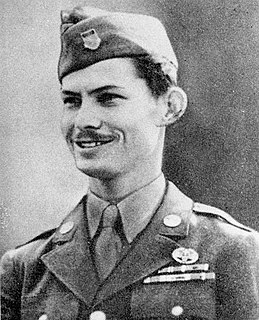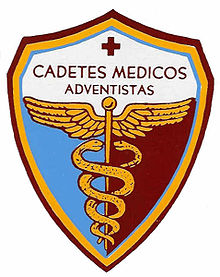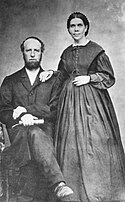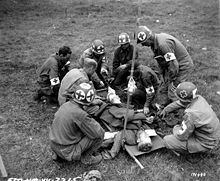
The Seventh-day Adventist Church is an Adventist Protestant Christian denomination which is distinguished by its observance of Saturday, the seventh day of the week in the Christian (Gregorian) and the Hebrew calendar, as the Sabbath, and its emphasis on the imminent Second Coming (advent) of Jesus Christ. The denomination grew out of the Millerite movement in the United States during the mid-19th century and it was formally established in 1863. Among its co-founders was Ellen G. White, whose extensive writings are still held in high regard by the church. Much of the theology of the Seventh-day Adventist Church corresponds to common evangelical Christian teachings, such as the Trinity and the infallibility of Scripture. Distinctive post-tribulation teachings include the unconscious state of the dead and the doctrine of an investigative judgment. The church places an emphasis on diet and health, including adhering to Kosher food laws, advocating vegetarianism, and its holistic view of human nature—i.e. that the body, soul, and spirit form one inseparable entity. The Church holds the belief that "God created the universe, and in a recent six-day creation made the heavens and the earth, the sea, and all that is in them, and rested on the seventh day". Marriage is defined as a lifelong union between a man and a woman. The second coming of Christ, and resurrection of the dead, are among official beliefs.

A conscientious objector is an "individual who has claimed the right to refuse to perform military service" on the grounds of freedom of thought, conscience, or religion.

The Seventh Day Adventist Reform Movement is a Protestant Christian denomination in the Sabbatarian Adventist movement that formed from a schism in the European Seventh-day Adventist Church during World War I over the position its European church leaders took on Sabbath observance and on committing Adventists to the bearing of arms in military service for Imperial Germany in World War I.

Peace churches are Christian churches, groups or communities advocating Christian pacifism or Biblical nonresistance. The term historic peace churches refers specifically only to three church groups among pacifist churches:

Union College is a private Seventh-day Adventist college in Lincoln, Nebraska. Founded in 1891, it is owned and operated by the Mid-American Union Conference of the Seventh-day Adventist Church. It is accredited by the Adventist Accrediting Association (AAA) and the Higher Learning Commission. The college is home to the Center for Interfaith Studies and Culture. It is a part of the Seventh-day Adventist education system, the world's second largest Christian school system.

Southern Adventist University is a private Seventh-day Adventist university in Collegedale, Tennessee. It is owned and operated by the Southern Union Conference of Seventh-day Adventists. It was founded in 1892 in Graysville, Tennessee, as Graysville Academy and was the first Adventist school in the southern U.S. Due to the need for additional space for expansion the school relocated in 1916 and was renamed Southern Junior College. In 1944, Southern began awarding baccalaureate degrees and was renamed Southern Missionary College. In 1996 the institution started conferring master's degrees and adopted its current name.

Military service is service by an individual or group in an army or other militia, air forces, and naval forces, whether as a chosen job (volunteer) or as a result of an involuntary draft (conscription).

In the United States, military conscription, commonly known as the draft, has been employed by the U.S. federal government in six conflicts: the American Revolutionary War, the American Civil War, World War I, World War II, the Korean War, and the Vietnam War. The fourth incarnation of the draft came into being in 1940, through the Selective Training and Service Act. It was the country's first peacetime draft. From 1940 until 1973, during both peacetime and periods of conflict, men were drafted to fill vacancies in the U.S. Armed Forces that could not be filled through voluntary means. Active conscription in the United States ended in 1973, when the U.S. Armed Forces moved to an all-volunteer military. However, conscription remains in place on a contingency basis and all male U.S. citizens, regardless of where they live, and male immigrants, whether documented or undocumented, residing within the United States, who are 18 through 25 are required to register with the Selective Service System. United States federal law also continues to provide for the compulsory conscription of men between the ages of 17 and 45 and certain women for militia service pursuant to Article I, Section 8 of the United States Constitution and 10 U.S. Code § 246.

Loma Linda University (LLU) is a private Seventh-day Adventist health sciences university in Loma Linda, California. As of 2019, the university comprises eight schools and a Faculty of Graduate Studies. It is a part of the Seventh-day Adventist education system. The university is accredited by the Western Association of Schools and Colleges (WASC). Its on-campus church has around 7,000 members.
Katsuki James Otsuka was a Nisei Japanese American Quaker who was jailed as a conscientious objector during World War II, and later became a war tax resister.

Desmond Thomas Doss was a United States Army corporal who served as a combat medic with an infantry company in World War II. He was twice awarded the Bronze Star Medal for actions on Guam and in the Philippines. Doss further distinguished himself in the Battle of Okinawa by saving 75 men, becoming the only conscientious objector to receive the Medal of Honor for his actions during the war. His life has been the subject of books, the 2004 documentary The Conscientious Objector, and the 2016 Oscar-winning film Hacksaw Ridge, where he was portrayed by Andrew Garfield.

Operation Whitecoat was a biodefense medical research program carried out by the United States Army at Fort Detrick, Maryland between 1954 and 1973. The program pursued medical research using volunteer enlisted personnel who were eventually nicknamed "Whitecoats". These volunteers, all conscientious objectors, including many members of the Seventh-day Adventist Church, were informed of the purpose and goals of each project before providing consent to participate in any project. The stated purpose of the research was to defend troops and civilians against biological weapons and it was believed that the Soviet Union was engaged in similar activities.

The Civilian Public Service (CPS) was a program of the United States government that provided conscientious objectors with an alternative to military service during World War II. From 1941 to 1947, nearly 12,000 draftees, willing to serve their country in some capacity but unwilling to perform any type of military service, accepted assignments in "work of national importance" in 152 CPS camps throughout the United States and Puerto Rico. Draftees from the historic peace churches and other faiths worked in areas such as soil conservation, forestry, fire fighting, agriculture, under the supervision of such agencies as the U.S. Forest Service, the Soil Conservation Service, and the National Park Service. Others helped provide social services and mental health services.

Monterey Bay Academy (MBA) is a private school in Santa Cruz County, California. It is a part of the Seventh-day Adventist education system, the world's second largest Christian school system.

The Selective Training and Service Act of 1940, also known as the Burke–Wadsworth Act, Pub.L. 76–783, 54 Stat. 885, enacted September 16, 1940, was the first peacetime conscription in United States history. This Selective Service Act required that men who had reached their 21st birthday but had not yet reached their 36th birthday register with local draft boards. Later, when the U.S. entered World War II, all men from their 18th birthday until the day before their 45th birthday were made subject to military service, and all men from their 18th birthday until the day before their 65th birthday were required to register.

Great Lakes Adventist Academy (GLAA) is a co-educational Seventh-day Adventist secondary boarding school located in Cedar Lake, Michigan, United States.It is a part of the Seventh-day Adventist education system, the world's second largest Christian school system.

The International Missionary Societyof Seventh-Day Adventist Church Reform Movement (IMSSDARM) is an independent Protestant Christian denomination that split from the Seventh Day Adventist Reform Movement Church in 1948.
Conscientious objection in the United States is based on the Military Selective Service Act, which delegates its implementation to the Selective Service System. Conscientious objection is also recognized by the Department of Defense.
While the Republic of Korea's Constitution states that all citizens, regardless of gender, sex, political or religious affiliation, should be afforded equal treatment under the law, some scholars, such as Intaek Hwang, claim that the culture of militarism is so pervasive that Conscientious Objectors are stripped of the rights discussed in the Constitution when universal male conscription became the law in 1948. A Conscientious Objector is defined as "an individual who has claimed the right to refuse to perform military service on the grounds of freedom of thought, conscience and or religion" by the United Nation's Human Rights Commission. Since the signing of the Conscription Law in 1949, stating that every male 18 years of age must serve in the military, Conscientious Objectors, when found, are arrested and subject to violent punishments.





















